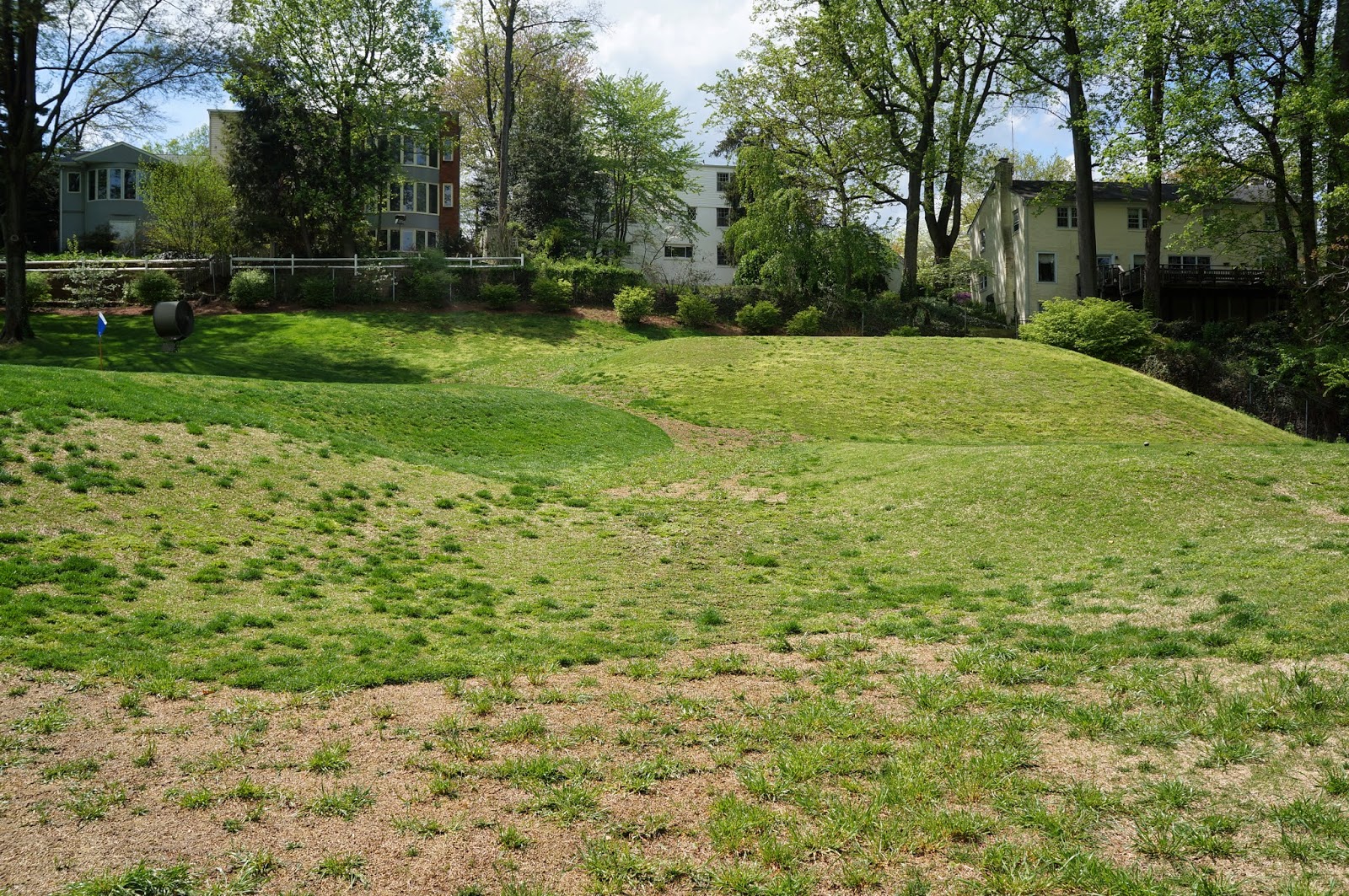All those white things are seed heads. Similar to what we see on the greens, this grass is one of the few that will seed at our normal cutting heights. It's the primary reason this grass is so tough to overcome is it's the ability to put out a tremendous amount of seed. So much that it can overwhelm all our efforts to over-seed the rough. In the fall we attempt to seed in desirable grasses, but at the same time we are opening the soil for new grass varieties we also make the soil available for all the Poa seeds to become planted as well.
In the case of this past fall, after we over-seeded the course the weather turned cool and wet. These are perfect conditions for Poa annua, and since it was present as well as the tall fescue seeds, they thrived in conditions better suited for this obnoxious turf. It germinates faster and establishes quicker, and the slow cool spring favored its development even more.
Products that attempt to take out Poa are available and we have them here, but imagine if we had damaged only 50% of the Poa, we would be playing on lots of bare ground. Spring seeding is an iffy practice with the need to apply chemicals to prohibit crabgrass and goosegrass. A timing conundrum, over-seed and be overcome by weeds or wait and watch Poa take over.
Sod is the best way to change out the turf, eliminate the competition and then treat the Poa when it is only a small percentage of the population. An example of this change is behind the 14th green.
 |
| 14th green dark green is tall fescue |
 |
| Tall fescue ringing the 3rd, look a the straight line short of the bunker and behind the green. |
There are many factors that go into the rough equation, but time and labor are the primary ones when the lush wet growth of spring begins. Although we are busy with many aspects of a late arriving season, we are not neglecting mowing. We are very aware of the conditions and putting as much manpower as possible into the operation. It's a process we monitor very closely as golfers, neighbors and staff all have to occupy the same space for a limited number of hours and weather conditions. Its a difficult puzzle to solve but we are working hard to make it one that everyone can enjoy.


